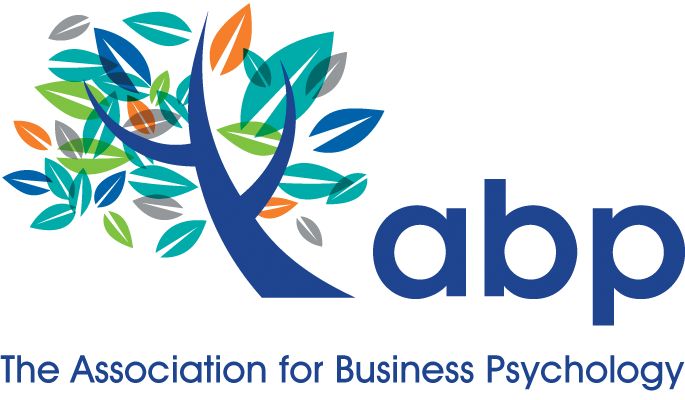Authored by Certified Business Psychologist Laura Howard. Certified Business Psychologist, Laura Howard, reflects on the webinar she recently delivered to ABP members. Below she outlines the main findings of her published research uncovering systematic barriers women face when being authentic as leaders. Importantly, she gives…

Author: Claire Lish (ABP Company Secretary/Governance Lead)
Be honest.
When was the last time you and your colleagues completely lost it in one of those contagious “belly laugh” moments where even when a quiet pause of composure arrives, someone else in the group sets it off again, and you are lost to eye-watering, red faced, silliness and shared hilarity? Invariably this happens over a scenario that when you try to recount it later, (because it was just so funny, it needs to be regaled), it then really doesn’t sound that funny at all, and is therefore caveated with statements like “You had to be there, no seriously, it was SO funny….”
In my teams this has often happened on a Friday afternoon. I am not sure why, perhaps we take the foot off the accelerator a little, the promise of a relaxing weekend ahead lightening the mood. I remember we once completely lost an afternoon giving our own voice overs to a parking dispute we could see from the window of our office. It was ridiculous, it wasted lots of time, every time we thought we had composed ourselves, someone else in the team piped up with a new impression, and we lost it all over again. We had never felt more connected.
As we approach International Belly Laugh Day, this is a great moment to reflect on the power of laughter, not just as a moment of joy, but as a pivotal element in enhancing business performance and the quality of working lives. This aligns seamlessly with the ABP’s vision of being “The Home and Voice of Business Psychology”, where the focus is not only on professional excellence but also on fostering a community that appreciates the human aspects of business. Like laughter!
There has been some interesting recent research that underscores the importance of laughter in the workplace. Shimazu et al. (2023), in their study published in Industrial Health, found that laughter is significantly linked with higher work engagement among employees. This reflects the ABP’s mission of improving relationships between people and organisations, highlighting how something as simple as laughter can bridge gaps and build stronger, more engaged teams.
The role of humour in academia also offers insights into its power in the workplace. Hah (2021) in Studies in Higher Education discusses how academics use self-deprecating humour and laughter as pragmatic strategies to co-construct understanding and identity in the face of academic struggles. This illustrates laughter’s role in not just easing tension but also in forging social bonds – essential in any professional setting, particularly those involving teamwork and collaboration (Hah, 2021).
Scott et al. (2022) in Philosophical Transactions of the Royal Society B explore the contagion effect of laughter. Their work builds on Robert Provine’s research, emphasizing laughter’s role in behavioural contagion. This contagion, a ripple effect of positive emotion, can significantly impact team dynamics, morale, and productivity in the workplace (Scott et al., 2022). Their findings align with the ABP’s vision of creating meaningful networking opportunities that are not only educational but also enjoyable. Laughter, as a contagious behaviour, can foster an environment of camaraderie and positivity, crucial for effective networking and collaboration.
The ABP values of being passionate, inclusive, informative, connected, and visible are embodied in the act of sharing laughter. Whether one is a practicing business psychologist, a student, an academic, or an HR professional, embracing laughter aligns with the ABP’s inclusive nature, welcoming diverse professionals united by a common interest in business psychology.
As we observe International Belly Laugh Day, let us remind ourselves of the power of a simple laugh. In the serious business of psychology and human resources, it is easy to overlook such a natural, potent tool for enhancing wellbeing and engagement. So, let’s encourage each other to find moments of levity and laughter in our work with clients and within our teams. After all, a day without laughter is a day wasted, especially in the world of business psychology.
(I am always available on Friday afternoons for people watching and laughing at our own jokes about strangers trying to park….)
These are the papers – available on Ebsco if anyone is interested:
Shimazu, A., Sakakibara, K., Hamsyah, F., Kawada, M., Miyanaka, D., Mori, N., & Tokita, M. (2023). Frequency of laughter and work engagement among Japanese employees: a cross-sectional study during COVID-19. Industrial Health.
Hah, S. (2021). ‘Why did you become a linguist? Nobody reads your work!’– Academic struggles constructed through humour and laughter. Studies in Higher Education, 46(8), 1518-1532.
Scott, S. K., Cai, C. Q., Billing, A. (2022). The critical human importance of laughter, connections and contagion. Philosophical Transactions of the Royal Society B, 377(1863).
These papers were also interesting, but made it a bit long:
Hatzipapas, I., Visser, M. J., & Janse van Rensburg, E. (2017). Laughter therapy as an intervention to promote psychological well-being of volunteer community care workers working with HIV-affected families. SAHARA J, 14(1), 202-212. (Laughter therapy – in their work with HIV-affected families, demonstrated its potential as a low-cost, effective strategy to reduce stress and enhance emotional wellbeing).
Hudson, K. M. (2001). Transforming a conservative company–one laugh at a time. Harvard Business Review, 79(7), 45-51. (Transformation of a conservative company culture at Brady Corporation, illustrated how embracing fun and laughter can lead not only to a more robust corporate culture but also to improved business performance).



